Ath now has a function to import curves and auto lofts into Fusion360 with addon scripts which creates a parametric surface, no need to mess about with meshes any more 🙂It's also a bit of a pain in the *** to turn the STL's into solids so I can edit them easily.
So now you can get something like this straight away
Wow! I just got the new version of the ATH Sooo nice!
Now I just gotta find the relationship between the simulations I get in Hornresp and the simulations in ATH.
I'll post some results when I get the horns printed.
My 3D printer has been giving me some trouble since I changed to 0.8mm nozzle.
Hopefully I'll have a a new working version sometime this week.
Thanks to everyone for the inputs!
Now I just gotta find the relationship between the simulations I get in Hornresp and the simulations in ATH.
I'll post some results when I get the horns printed.
My 3D printer has been giving me some trouble since I changed to 0.8mm nozzle.
Hopefully I'll have a a new working version sometime this week.
Thanks to everyone for the inputs!
Hornresp is very good at predicting the interaction between the mid range ports and the tweeter reflection null if the correct distances and volumes are entered.
Pick a horn type that is closest to your intended design and use that simulate the bare horn in Hornresp and ABEC from Ath to compare. The port length, diameter and volume of the throat chamber (Vtc) interact to form the bandpass response and they can be traded to get the response you want.
The frustrumizing is a way to make the effective port length very short with a sort of roundover. Can be simulated by adding some extra volume to Vtc.
Pick a horn type that is closest to your intended design and use that simulate the bare horn in Hornresp and ABEC from Ath to compare. The port length, diameter and volume of the throat chamber (Vtc) interact to form the bandpass response and they can be traded to get the response you want.
The frustrumizing is a way to make the effective port length very short with a sort of roundover. Can be simulated by adding some extra volume to Vtc.
I after managing to calibrate my printer again I made a new design (with the same dimensions. But this time executed in ATH.
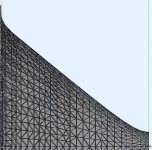
I made it in 3 parts so I can quickly iterate through throat designs.

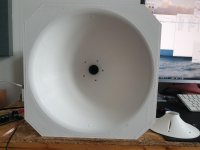
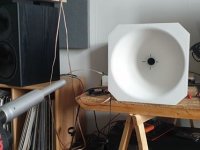
Made a 5 tap and a Slat version and here are the measurements.
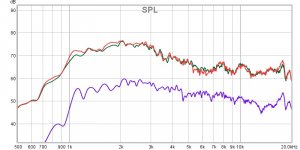
Red - 5 taps
Green - Slats
Purple - No Horn (just the driver measurement at the same position)
Straight measurement without any filters 500Hz - 20kHz
The new horn definitely measures better than the old one.
It's funny how much more output the tweeter has with the horn on 🙂

I made it in 3 parts so I can quickly iterate through throat designs.



Made a 5 tap and a Slat version and here are the measurements.

Red - 5 taps
Green - Slats
Purple - No Horn (just the driver measurement at the same position)
Straight measurement without any filters 500Hz - 20kHz
The new horn definitely measures better than the old one.
It's funny how much more output the tweeter has with the horn on 🙂
There is nothing below 1kHz. Where is the mid or not turned on? I feel the mid holes or slots are still to small and will be compressed. Make them at least 10% to 15% of the cone Sd. I feel like they are 4-5% at current size (if even that).
Thanks xrk!
I'll make a version with bigger slats when my printer finishes printing the second horn.
It's just the tweeter as I haven't built boxes for the horns to sit in atm.
I just wanted to see what effect the taps/slats have on the tweeter frequency response.
I'll make a version with bigger slats when my printer finishes printing the second horn.
It's just the tweeter as I haven't built boxes for the horns to sit in atm.
I just wanted to see what effect the taps/slats have on the tweeter frequency response.
Try a “V” shaped slot. With the vertex pointing out. It might be more invisible to the tweeter. And put each V offset at slightly different t axial location and azimuthal position in fact, pentagonal symmetry slightly randomized from nominal 72deg separation is best to reduce interference notches.
That’s the nice thing with printing - you can make it look anyway you want.
That’s the nice thing with printing - you can make it look anyway you want.
Last edited:
I thought about making a sightly rounded V.
I think the high air velocity might produce some noise where the V narrows.
Randomizing the separation goes to my list as well!
Great recommendations.
I'm having some thoughts about converting the back side of the speaker to a horn instead of just venting it.
Digging at some compound horn theory and examples 🙂
Thought it could be cool if it's fully horn loaded and then the response of the woofer back can be EQ'd a bit by a back chamber/secondary back chamber perhaps.
I'll post more info as I find it along the way 🙂
Another aspect of the speaker is that It shall be active.
I have purchased two amps for testing. A mono 60w and mono 200w class D from a manufacturer called Wondom.
They produce a fairly high output and I think I might be overdoing it since the speker is rated 25w/150w for the tweeter/woofer.
There is also quite a bit of hiss coming out of the 60w amp 🙁
I think the high air velocity might produce some noise where the V narrows.
Randomizing the separation goes to my list as well!
Great recommendations.
I'm having some thoughts about converting the back side of the speaker to a horn instead of just venting it.
Digging at some compound horn theory and examples 🙂
Thought it could be cool if it's fully horn loaded and then the response of the woofer back can be EQ'd a bit by a back chamber/secondary back chamber perhaps.
I'll post more info as I find it along the way 🙂
Another aspect of the speaker is that It shall be active.
I have purchased two amps for testing. A mono 60w and mono 200w class D from a manufacturer called Wondom.
They produce a fairly high output and I think I might be overdoing it since the speker is rated 25w/150w for the tweeter/woofer.
There is also quite a bit of hiss coming out of the 60w amp 🙁
XRK, you seem to know a few things about amps!
Maybe you could recommend something!
PS:
I can't help but wonder what you have going on there:
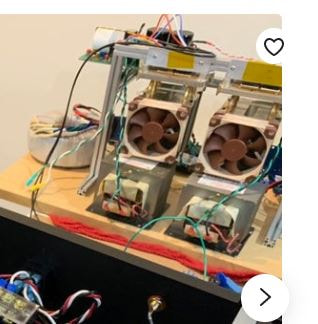
It's a corner of a photo from your gallery on etsy
Maybe you could recommend something!
PS:
I can't help but wonder what you have going on there:

It's a corner of a photo from your gallery on etsy
It’s a bit OT but that is a SE Class A amp using a microwave oven transformer as a reactive choke load and a surplus Dell heat pipe CPU cooler mounted to a an IXYS mosfet dissipating about 150w of thermal for a 50w into 8ohm amp designed by Aksa, that is, quite possibly the best amp I have ever built or heard. It’s called the Glass Harmony and is not a public DIY design.
There does not seem to be much difference between the hole and slots but they are both very small. You could try running mid range sweeps at 3dB increments and see when compression sets in for the different slots if you want an objective measure of slot performance.
A back loaded horn is going to be very large if you want the 6.5" to go low in frequency but perhaps you can get some gain in the midrange/upper bass by making a kind of flared bass reflex. Systems like the SKHORN use small back chambers and flared ports to get output gain in the upper bass.
For the tweeter amplifier you want the output noise voltage to be as low as possible and to carefully gain structure (IE have no excess gain in the system). If you both want the full tweeter output and to be able to use it on the desk it might be worth using gain pads between your DAC and amp that you can remove if you want to play loud.
A back loaded horn is going to be very large if you want the 6.5" to go low in frequency but perhaps you can get some gain in the midrange/upper bass by making a kind of flared bass reflex. Systems like the SKHORN use small back chambers and flared ports to get output gain in the upper bass.
For the tweeter amplifier you want the output noise voltage to be as low as possible and to carefully gain structure (IE have no excess gain in the system). If you both want the full tweeter output and to be able to use it on the desk it might be worth using gain pads between your DAC and amp that you can remove if you want to play loud.
- Home
- Loudspeakers
- Multi-Way
- Bookshelf Synergy with a 6.5" Coax in a reflex box